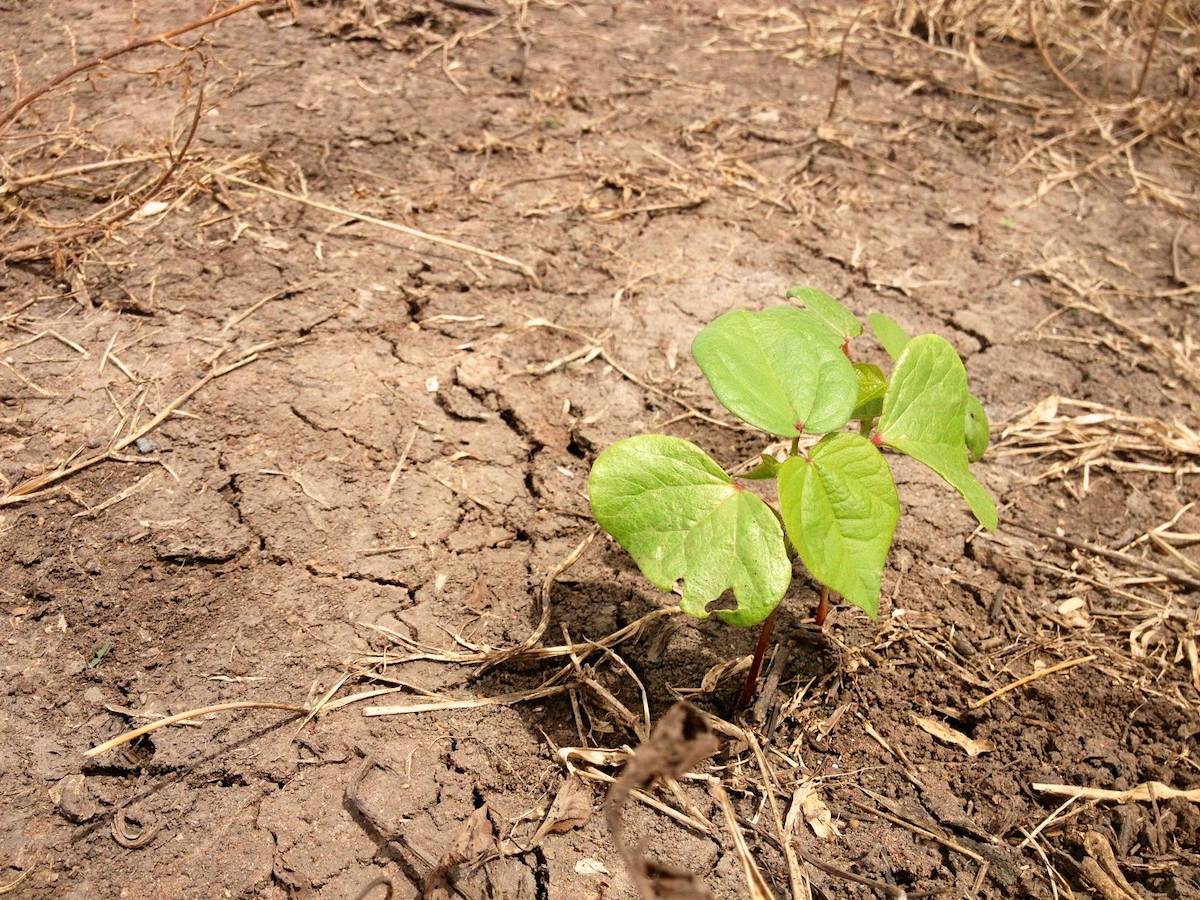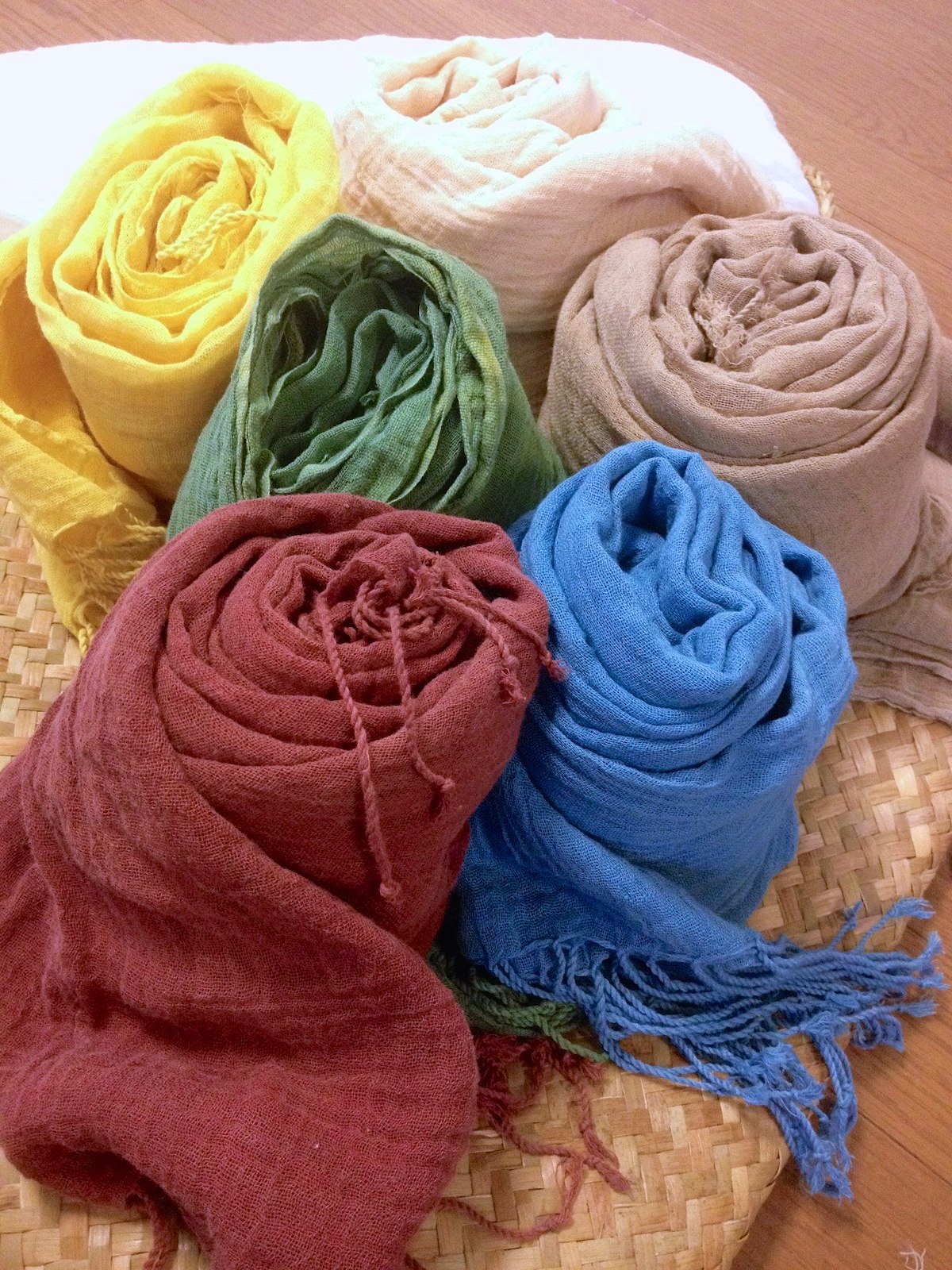Mikawa cotton has germinated.
※ The image shows the fourth day after the seed was sown. The white appearance in the center of the twin leaves is the epidermis of the seed, which still has cotton fibers like laying hairs.
Vitality of Native Species
※ The image shows the cotton crop area on the Thai border (Sampaulong area). Even though it is already the rainy season, there has been almost no rain this year. In Battambang, August is the wettest month with rainfall like a waterfall, but we are suffering from a serious drought, and the soil in the fields is still as crumbly as in the dry season everywhere.
We delivered the seeds.
The image shows Mr. Kurta growing cotton for CCC. Mr. Kurta's home and fields are located just a short distance to the Thai border. Neighbors are migrant workers for construction labor in Thailand, working at construction sites in Bangkok and elsewhere.
Indigo Seeds from Tokushima, Japan
※The image shows a Tadeai seed; the CCC logo is branded on a neem tree branch. When I posted that the Indigo was only lightly dyed, a friend of mine who lives in Tokushima Prefecture sent it to me. Thank you so much! Indigo, known as Japan blue since the Meiji era (1868-1912), is famous as Tokushima's Awa indigo. Lafcadio Hearn, the famous author of "Kwaidan (ghost stories)," who came to Japan in 1890, praised the indigo color, saying, "Japan is a mysterious blue country.
【The joys of natural dyeing③】
※ The image shows dyed cloth. I thought I had done a good job with the coloring to some extent, but there was a pitfall: I asked them to cut it at 180 cm, but the length of the finished product was quite different. Some colors are hard to dye, so I had to soak them in hot water many times, which caused them to shrink. Still, the lengths do not match, so I am trying to think of a solution.
【The joys of natural dyeing②】
※ The image shows the process of natural dyeing and a prototype under trial and error. Before this dyeing, I had dyed without pre-treating with soy milk, which resulted in a somewhat blurred color. The staff we asked to do the dyeing were students from a vocational training NGO who were learning skills to become independent after graduating from an orphanage at the age of 15, and they had never dyed cotton before.







